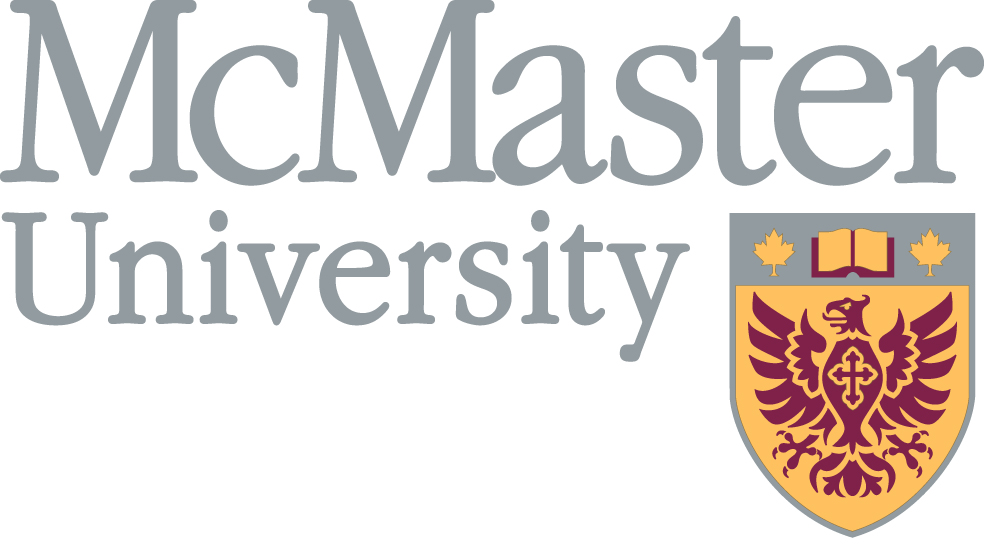Réunion d'hiver SMC 2014
Université McMaster, 5 - 8 décembre 2014
Org: Ruxandra Moraru (Waterloo) et Steven Rayan (Toronto)
[PDF]
- PETER CROOKS, University of Toronto
Generalized Equivariant Cohomology and Stratifications II [PDF]
-
This will be the second of two presentations on Generalized Equivariant Cohomology and Stratifications, and it will build upon the foundation developed in the first presentation. We will give a framework for computing generalized $T$-equivariant cohomology on a $T$-space arising as the direct limit of smooth complex projective $T_{\mathbb{C}}$-varieties, each having finitely many $T$-fixed points. We will then perform this computation in the context of a specific example, namely the affine Grassmannian of a complex semisimple group $G$. This joint work with Tyler Holden.
- TYLER HOLDEN, University of Toronto
Generalized Equivariant Cohomology and Stratifications I [PDF]
-
Given a compact torus $T$, we describe the generalized $T$-equivariant cohomology $E_T^*$ of smooth projective varieties admitting an equivariant stratification, with particular emphasis placed on equivariant singular cohomology, $K$-theory, and complex cobordism. We further explore the utility of our result in deducing the $E_T^*$-module structure for spaces with finitely many $T$ fixed points. This is joint work with Peter Crooks.
- JEREMY LANE, University of Toronto
Monodromy of a Completely Integrable System [PDF]
-
Topological monodromy of integrable systems, as introduced by Duistermaat in 1980, is the first of three interesting obstructions to the existence of global action-angle coordinates. This obstruction has since been observed in many physical systems, so it comes as a bit of a shock that such a rough topological invariant was discovered so recently in the development of classical mechanics.
More recently, there have been attempts to make connections between topological monodromy in classical mechanics, and quantum phenomena, specifically in energy levels of particles and molecules (see work by Vu Ngoc, Sadovskii and others). In this talk I will give a brief introduction to topological monodromy of integrable systems, and present a completely integrable system on $S^2\times S^2\times S^2$ which has non-trivial topological monodromy, as well as some relation to recent research in quantum physics (see the preprint arXiv:1411.7063).
- KEVIN LUK, University of Toronto
Logarithmic Courant Algebroids [PDF]
-
Given a smooth projective variety $X$ and $D$ a smooth divisor (not
necessarily reduced) on $X$, we define the notions of a logarithmic
Courant algebroid and a higher order tangency algebroid on $\left(X,D\right)$.
We will then proceed to discuss basic properties of these objects
and how to classify them via cohomological data. Also, we will show
that the wonderful compactification of an algebraic group $G$ is
an example of these algebroids.
- JAMES MRACEK, University of Toronto
Betti Numbers of Symplectic Quotients of Based Loop Groups [PDF]
-
We have computed the Betti numbers of symplectic quotients of based loop groups using equivariant Morse theory. Based loop groups come equipped with a Hamiltonian group action whose associated moment map can be used as a Morse function. We use the norm squared of the moment map in order to compute Betti numbers of the symplectic reductions at varying regular levels. The Betti numbers of the quotients exhibit changes when the reduction parameter crosses the singular locus of a component of the moment map. Additionally, the Betti numbers always stabilize at a finite stage. This talk will demonstrate these results through an examination of $\Omega SU(2)$. This project is joint work with Jonathan Fisher.
- NIKITA NIKOLAEV, University of Toronto
Spectral Networks and Moduli of Flat Connections [PDF]
-
Recent works of Gaiotto, Moore, and Neitzke introduced a tool, consisting of objects called Spectral Networks, to compute certain invariants in quantum field theory. I will describe how these objects are constructed and their relation to the moduli spaces of flat connections.
- DANIEL ROWE, University of Toronto
Lusztig Slices in the Affine Grassmannian [PDF]
-
I will introduce the type A affine Grassmannian as a homogeneous space of lattices. Then I will define Lusztig slices in the affine Grassmannian, which are isomorphic to subvarieties of the cone of nilpotent matrices. The goal of the talk is to explain a natural action of an additive group on these Lusztig slices and Hamiltonian reductions between the slices.
- ALAN THOMPSON, University of Waterloo
Degenerations of Plane Sextics [PDF]
-
I will discuss recent joint work with V. Alexeev, in which we classify degenerate plane sextics having a certain class of singularities that is natural from the standpoint of the minimal model program. I will then show that this classification extends to the setting where we not only allow the sextic curve to degenerate, but also allow the base space to degenerate to a quartic cone.
This classification has a nice combinatorial description, in terms of subdiagrams of a certain Coxeter diagram. This suggests the existence of a close relationship between two compactifications of the moduli space of K3 surfaces of degree two: one defined by the minimal model program and the other given as a toric blow-up of the Baily-Borel compactification defined by a Coxeter diagram.
- ALEJANDRA VICENTE-COLMENARES, University of Waterloo
Stable co-Higgs bundles over $\mathbb{P}^1 \times\mathbb{P}^1$. [PDF]
-
In this talk, we present the geometry of moduli spaces of stable co-Higgs bundles of odd degree over $\mathbb{P}^1 \times \mathbb{P}^1$. We will see, in particular, that for $c_2 = 0$ these moduli spaces are isomorphic to the moduli spaces of stable co-Higgs bundles of odd degree on $\mathbb{P}^1$. Moreover, we will give an explicit description of the moduli for $c_2 = 1$.






